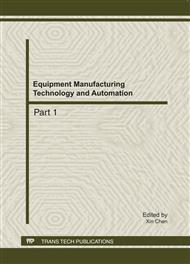p.1183
p.1187
p.1193
p.1197
p.1201
p.1205
p.1211
p.1215
p.1219
Discussion on the Wavelet Adjustment Factor Threshold Noise Reduction Technology Based on DSP
Abstract:
Because of discontinuity at threshold, hard threshold de-noising leads to the additional oscillation at threshold when reconstructing the signal, so that the smoothness of the de-noised signal becomes weak; Soft threshold de-noising method can guarantee the good continuity of the signal. However, for the existence of the fixed bias between the estimated threshold and actual threshold, there are also deviations between the reconstructed signal and the actual signal existing deviations too. In this work, by using the high performance DSP as a signal processing tool, we reduced the noise of actual measured vibration signal collected from headstock of CA6140 lathe. By comparing, the result is the same as the noise reduction simulation calculated from MATLAB, which demonstrates the noise reduction effect of wavelet adjustment factor threshold de-noising apparently.
Info:
Periodical:
Pages:
1201-1204
Citation:
Online since:
August 2011
Authors:
Keywords:
Price:
Сopyright:
© 2011 Trans Tech Publications Ltd. All Rights Reserved
Share:
Citation:


